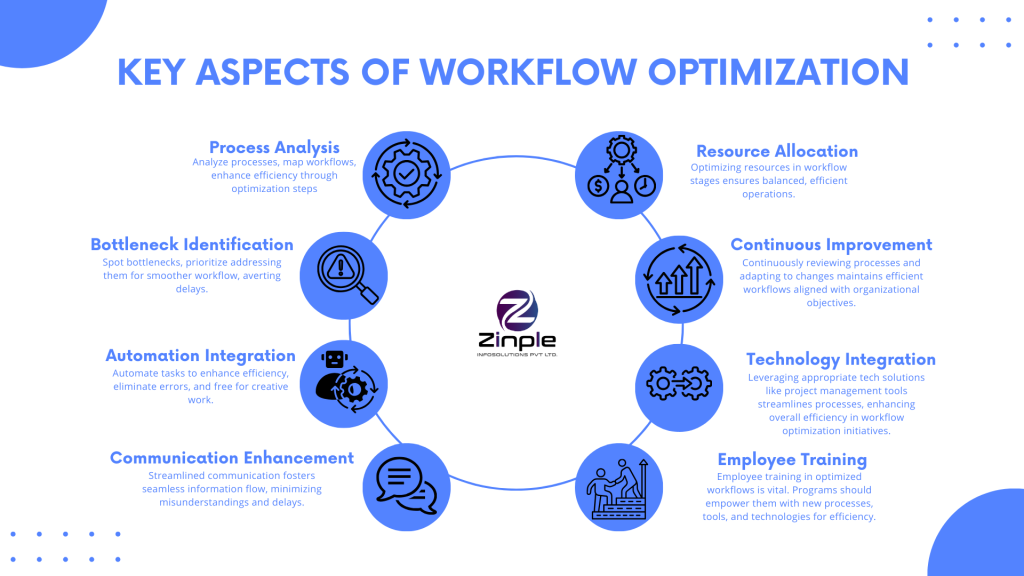Workflow Optimization
Workflow optimization involves the systematic improvement of processes to enhance efficiency, reduce bottlenecks, and maximize output. This practice is essential for organizations aiming to streamline operations and adapt to changing business environments.
Key aspects of workflow optimization include:
Process Analysis: Identifying and analyzing existing processes is the first step in optimization. This involves mapping out workflows, understanding each step, and identifying areas where efficiency can be improved.
Bottleneck Identification: Pinpointing bottlenecks—points in the process where the flow of work is impeded—is crucial. Addressing these bottlenecks is a priority to prevent delays and ensure a smoother workflow.
Automation Integration: Introducing automation to repetitive and time-consuming tasks can significantly boost efficiency. Automation eliminates manual errors, speeds up processes, and allows employees to focus on tasks that require human judgment and creativity.
Communication Enhancement: Effective communication is key to streamlined workflows. Optimizing communication channels, both within teams and between departments, ensures that information flows seamlessly, reducing misunderstandings and delays.

Resource Allocation: Efficient workflow management involves optimizing resource allocation. This includes human resources, time, and technology. Aligning resources with the demands of each workflow stage ensures a more balanced and efficient operation.
Continuous Improvement: Workflow optimization is an ongoing process. Regularly reviewing and reassessing processes, considering feedback, and adapting to changing circumstances ensures that workflows remain efficient and aligned with organizational goals.
Technology Integration: Utilizing the right technology solutions can significantly contribute to workflow optimization. Whether it’s project management tools, collaboration platforms, or data analytics, technology can streamline processes and improve overall efficiency.
Employee Training: Ensuring that employees are trained in optimized workflows is essential. Training programs should focus on new processes, tools, and technologies, empowering employees to work more efficiently.
In summary, workflow optimization is a dynamic strategy aimed at improving the efficiency and effectiveness of organizational processes. By analyzing, refining, and adapting workflows, businesses can respond to challenges more effectively, reduce operational costs, and position themselves for sustained success in a competitive landscape.




